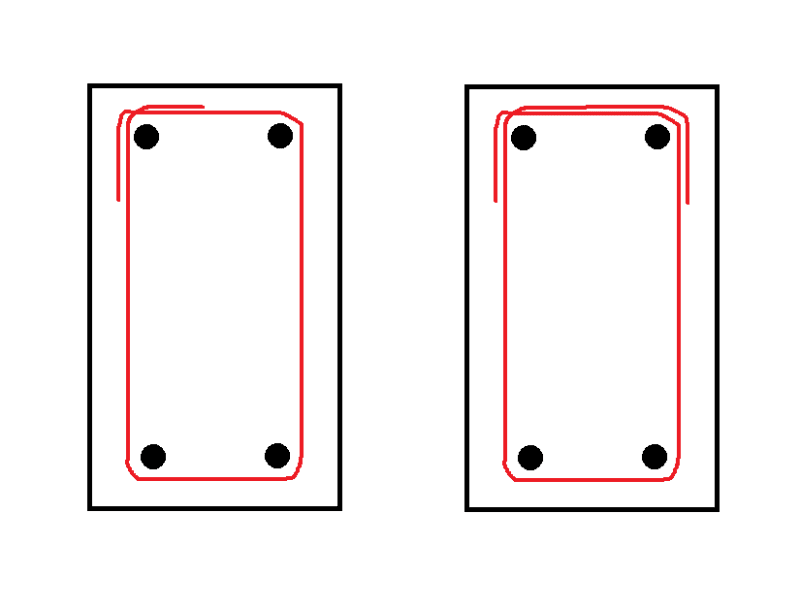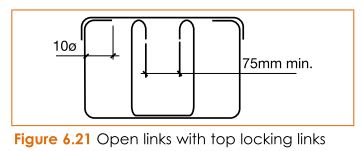bugbus
Structural
- Aug 14, 2018
- 500
Just wondering how everyone feels about the two alternative shear reinforcement arrangements below:

The reason for not using the typical 135 degree hooks in this situation is to avoid clashing between the hooks and some spiral reinforcement behind a PT anchorage (not shown). Ideally the shear reinforcement would not intrude into the core of the beam.
Obviously the option on the left is generally not acceptable. In Australia the rule is: "Fitment cogs shall not be used when the anchorage is solely in the outer layer of reinforcement. In this case fitment hooks shall be used." I believe the rule is generally the same across the various codes.
Any thoughts on the arrangement on the right? I believe there must be a point at which the cogged part of the stirrup is long enough to avoid the stirrup losing anchorage when the cover is lost. For example, see below the standard prestressed bridge plank used by the state road authority in NSW, Australia. This strictly does not comply with the rule mentioned above ("Fitment cogs shall not be used when the anchorage is solely in the outer layer of reinforcement").


The reason for not using the typical 135 degree hooks in this situation is to avoid clashing between the hooks and some spiral reinforcement behind a PT anchorage (not shown). Ideally the shear reinforcement would not intrude into the core of the beam.
Obviously the option on the left is generally not acceptable. In Australia the rule is: "Fitment cogs shall not be used when the anchorage is solely in the outer layer of reinforcement. In this case fitment hooks shall be used." I believe the rule is generally the same across the various codes.
Any thoughts on the arrangement on the right? I believe there must be a point at which the cogged part of the stirrup is long enough to avoid the stirrup losing anchorage when the cover is lost. For example, see below the standard prestressed bridge plank used by the state road authority in NSW, Australia. This strictly does not comply with the rule mentioned above ("Fitment cogs shall not be used when the anchorage is solely in the outer layer of reinforcement").


